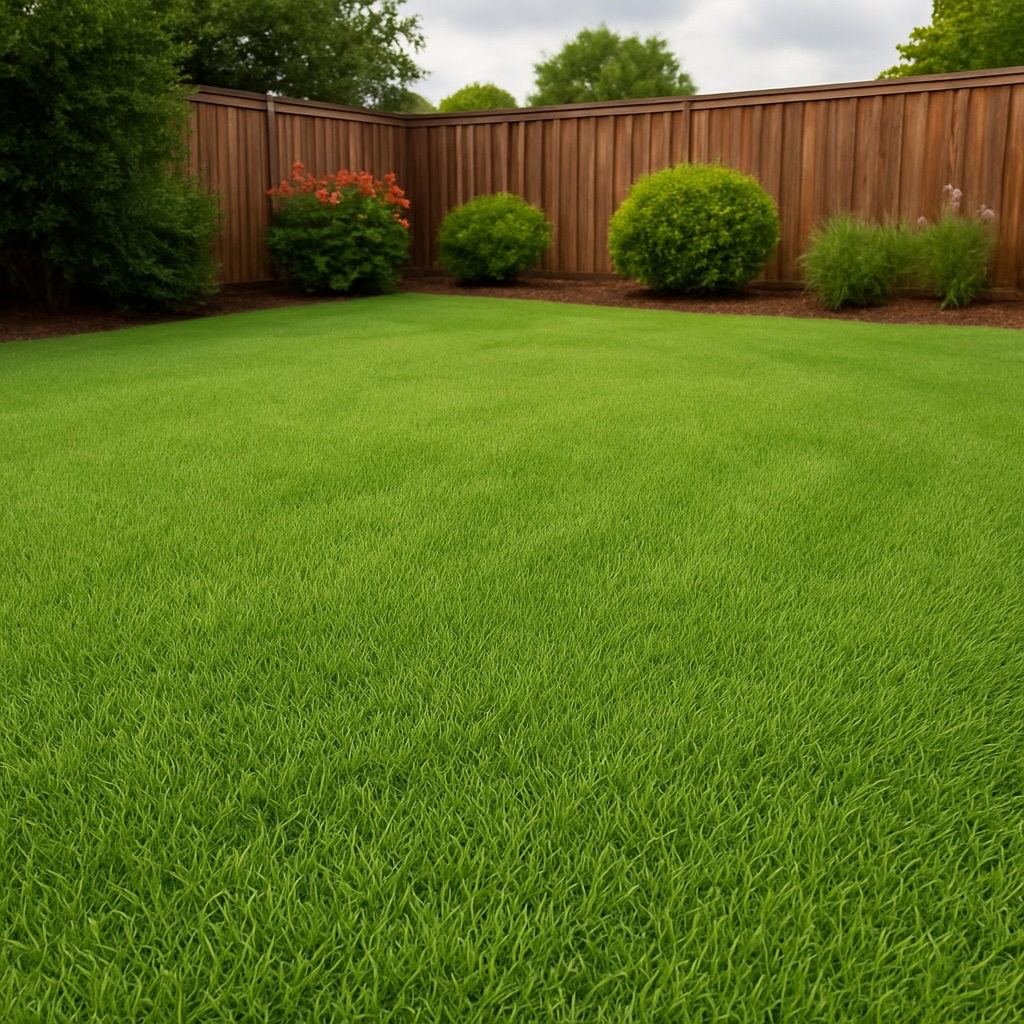Zoysia is one of the best grass types for Atlanta yards—it’s heat-tolerant, drought-resistant, and feels great underfoot. But to keep it looking its best, you’ll need to adjust your lawn care routine to Georgia’s unique climate. This guide covers everything about how to keep Zoysia grass healthy in Atlanta, including mowing, watering, aerating, and feeding your lawn through every season.

Why Zoysia Works in Atlanta
Zoysia thrives in Atlanta’s hot summers and tolerates some shade. It forms a dense, carpet-like lawn that chokes out weeds, recovers from foot traffic, and requires less water than cool-season grasses.
Ideal Mowing Height for Zoysia
Keep Zoysia grass between 1.5–2.5 inches tall. Mow weekly during peak growing season (late spring to early fall), and never remove more than one-third of the blade height at a time. Cutting too low weakens the plant and leads to bare patches and weed invasion. Height consistency is especially important in Atlanta’s heat, where short cuts can dry out turf quickly. Always use sharp mower blades to avoid fraying and browning.
Watering Zoysia the Right Way
Water deeply but infrequently—about 1 inch per week, including rainfall. In dry stretches, water 2–3 times per week in the early morning. If your soil is clay-heavy (common in Atlanta), it may drain slowly—adjust irrigation cycles to prevent runoff. In sandy areas, shorter but more frequent watering may be needed. Avoid evening watering to reduce disease risk. Zoysia’s deep roots help it survive summer droughts and recover quickly once rain returns.
Aeration and Thatch Control
Zoysia can build up thatch over time, so aerate once a year—typically in late spring. Core aeration (removing plugs) is preferred over spike aeration (punching holes), as it better relieves compaction and improves air/water movement in clay soils. For heavy thatch, dethatch before peak summer heat. “Zoysia loves the Georgia heat—but you have to stay ahead of the thatch,” says local turf expert Mariah Benson. “A spring aeration can make a huge difference by loosening the soil and improving resilience.”
Fertilizing Schedule for Zoysia in Georgia
Fertilize your Zoysia lawn in late spring (May) and again in mid-summer (July) using a balanced, slow-release nitrogen fertilizer. Avoid high-nitrogen formulas in fall—they can encourage late growth vulnerable to frost.
Watch for These Common Problems
- Brown patch: A fungal disease common during humid summer nights—water early in the day and avoid over-fertilizing.
- Grubs: Look for wilting patches that lift easily from the soil. Apply grub control if needed in late spring or early summer.
- Thatch buildup: Can cause spongy turf and block nutrients—use a dethatching rake or machine if necessary.
Maintain the Right Soil pH
Zoysia prefers a soil pH between 6.0 and 6.5. Test your soil annually and apply lime if your pH is too low. Soil testing kits are inexpensive and available at most garden centers.
Encouraging Deep Roots and Drought Tolerance
Zoysia builds deep roots when watered correctly and mowed at the right height. These roots help the lawn go dormant during dry spells and bounce back when rains return.
For general yard prep ideas in the region, check out our related post on Preparing Atlanta Beds for Summer Blooms.
Frequently Asked Questions
How often should I water Zoysia in summer?
1 inch per week including rainfall is ideal. During extreme heat, water more often in early morning hours.
When should I fertilize Zoysia in Atlanta?
Apply fertilizer in May and again in July using a balanced, slow-release nitrogen product.
How short should I mow Zoysia grass?
Maintain a height between 1.5–2.5 inches and never remove more than 1/3 of the blade height at once.
Does Zoysia go dormant in Atlanta?
Yes, Zoysia goes dormant and turns brown in winter, but will green up again in late spring.
✅ Zoysia Lawn Care Checklist for Atlanta
- ✂️ Mow weekly at 1.5–2.5 inches
- 💧 Water 1 inch per week in early morning
- 🪱 Aerate in late spring to reduce compaction
- 🌿 Fertilize in May and July with slow-release nitrogen
- 🧪 Test soil pH and lime as needed
- 🔍 Watch for brown patch and grub damage
Final Thoughts
With a few smart steps, your Zoysia grass can handle Atlanta’s summer heat with ease. Mow high, water deep, feed thoughtfully, and aerate regularly to keep your lawn looking vibrant from spring through fall. Zoysia may go dormant in winter—but when cared for correctly, it always comes back strong.
📊 Did You Know?
Atlanta averages over 47 inches of rain annually, mostly during spring and summer. That’s great for Zoysia—if your lawn is properly graded and maintained. Watch for water pooling and adjust slopes or irrigation settings if needed.
🎨 Zoysia in Landscape Design
Because of its dense texture and vibrant color, Zoysia works well in geometric lawn shapes, between stepping stones, or bordering flower beds. Its soft feel also makes it a favorite around patios and barefoot play areas.
Related Articles for Atlanta Yards
Zoysia vs. Bermuda: What’s Better for Atlanta?
Both Zoysia and Bermuda thrive in Georgia heat—but they have different strengths. Bermuda grows faster, greens up sooner in spring, and recovers quickly from wear. Zoysia grows slower but offers superior shade tolerance, softer texture, and fewer weed issues. If you have partial shade or want lower maintenance, Zoysia is usually the better pick for Atlanta homes.
Switching Your Lawn to Zoysia
Transitioning from Bermuda or fescue? Start by removing the old grass with a sod cutter or non-selective herbicide, then lay Zoysia sod or plugs in late spring. Keep the soil moist until roots establish. It may take a full season to fill in, but the long-term benefits are worth it.
What to Expect in Winter
Zoysia turns tan and goes dormant in winter—even in mild Georgia years. Don’t worry—it’s normal. Avoid fertilizing in fall, and let your lawn rest. It will green up again once temperatures consistently stay above 70°F in late April or May.
